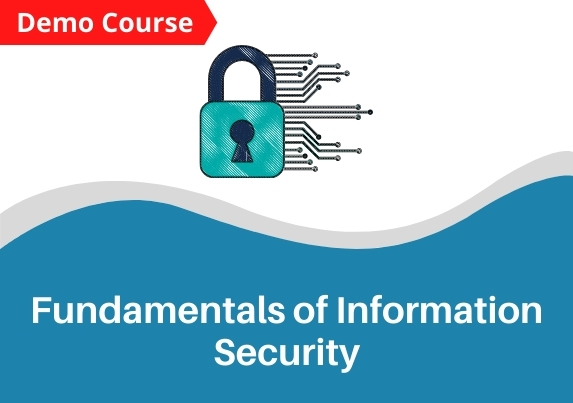About the course
In this course, you will learn about the basic principles of confidentiality, integrity availability concepts policies, procedures, guidelines, standards administrative measures and technical measures, people, process, and technology. After that, you will learn about the current trends in information security, cloud computing, its benefits, and issues related to InfoSec, standards available for InfoSec, which includes Cobit, Cadbury, ISO 27001, OWASP, OSSTMM, et. Then you will learn about vulnerability, threat and risk, risk assessment and mitigation along with quick fixes, introduction to BCP / DRP / incident management, segregation and separation of duties & roles and responsibilities, IT ACT 2000 and a lot more.
Learning Outcomes
After completing this course, you will be able to:
- Understand the cybersecurity risks.
- Implement these principles of cybersecurity.
- Design a secure information system on your own.
- Boost your hireability through innovative and independent learning.
Target Audience
The course can be taken by:
Students: All students who are pursuing any technical/professional courses, and interested in learning IT Security / Network Security / Cyber Security.
Teachers/Faculties: All teachers/faculties who wish to acquire new skills or improve their efficiency in information security.
Professionals: All IT Security / Network Security / Cyber Security professionals.
Why learn Fundamentals of Information Security?
Every day we hear about the newest attack, the latest exploit, or another cyber threat. In response, we hire security consultants, look for the best security team we can find, and buy the latest products from the security vendors. Information security isn’t limited to one sector, such as banks or finance, there are opportunities in retail, university settings and anywhere else, where data has value. The career prospects are bright for the candidates seeking a career in Information Security/Cyber Security. Information security is about defending data and critical information from unauthorized access, use, and potential destruction. It’s a field that is projected to grow by 22 percent through 2020 and opportunities are abundant for newcomers to this in-demand career. It should be noted that the demand for information security professionals has exceeded the demand for information technology professionals, and it is likely to continue as the times passes.
Course Features
- 24X7 Access: You can view lectures as per your own convenience.
- Online lectures: 4 hours of online lectures with high-quality videos.
- Updated Quality content: Content is latest and gets updated regularly to meet the current industry demands.
Test & Evaluation
1. During the program, the participants will have to take all the assignments given to them for better learning.
2. At the end of the program, a final assessment will be conducted.
Certification
1. All successful participants will be provided with a certificate of completion.
2. Students who do not complete the course / leave it midway will not be awarded any certificate.







